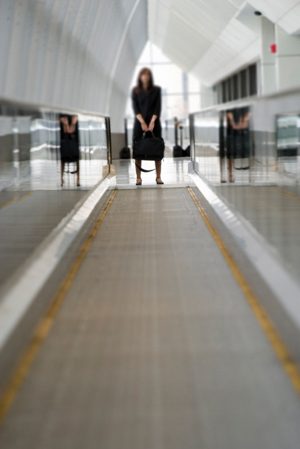The TSA’s new policy may have you dressing in drag.
Airlines may now need a crash-course in Gender 101. As of August 15, the Transportation Security Administration (TSA) implemented their new Secure Flight Program, which requires passengers to list their full first and middle names and their gender as it is stated on their government-issued I.D. in order to get a boarding pass.
When asked how the TSA plans to handle transgender passengers and the laws that vary state-by-state allowing people to change the gender on their I.D., TSA publicity agent Dwayne Baird simply stated, “I don’t know that there’s a policy to handle the transgender aspect.” With today’s multiple gender identifications, they’re going to have to figure one out.
Previously, individual airlines were responsible for checking passenger names against the FBI’s terrorist-watch “No Fly” list, but now the TSA has stepped in to take control. While extra identifying measures may streamline travel for some people, gender-queer passengers may run into extra snags.
Though it does relieve some stress to know that your gender won’t be listed on your actual boarding pass or need to be confirmed when you pass through security, not looking like the “Alexandra” you were born as may create problems. The gender and name you report while booking your ticket now needs to exactly match your I.D., and if you want to avoid a hassle, your appearance may need to as well.
“I don’t know that it’s the gender on your I.D. so much as it’s the information on the boarding pass that we’re interested in,” says Baird. “If you know that you’re going to have some changes…try to project what you’ll be like then, to have that accurate. Because it’s all about accuracy with the No Fly list.”
While the TSA is giving you yet another reason to change that pesky I.D., for now, Baird tells us that this process is all about flexibility.
“It really doesn’t matter to us a great deal what the differences are going to be as who you are…The Secure Flight Program has to do with identifying people who are on a terrorist watch list and making aviation safe.
We’re not trying to run a contest to see who looks like what, where, because that’s not our goal and that’s not our intent,” he explained. “It doesn’t have to do with looking at you face-to-face at a security checkpoint.”
Dressing in drag may get you on the plane for now, but the new program is set to become a hard-and-fast rule by spring 2010. Buckle up. We’re predicting some serious turbulence.
